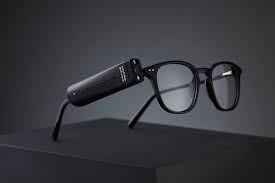Living with low vision can present numerous challenges, but with the right aids, individuals can maintain their independence and improve their quality of life. low vision aids are designed to help those with significant vision impairment perform everyday tasks more easily and effectively.
Types of Low Vision Aids
Magnifiers
Magnifiers are among the most widely used low vision aids and come in several forms. Handheld magnifiers are portable and easy to use, ideal for quick tasks like reading labels and menus. Stand magnifiers provide stability and are suitable for longer reading sessions or detailed work. Electronic magnifiers, also known as video magnifiers, offer adjustable magnification levels and can display text on a screen, making reading more comfortable for extended periods.
Screen Readers
Screen readers are software programs that convert text displayed on a screen into speech or braille. They are especially useful for reading emails and documents, converting text to audio to allow users to listen to emails and documents. Browsing the internet is facilitated by screen readers that help navigate websites and online content. These aids also enhance accessibility for various digital tools and applications.
Text-to-Speech Devices
Text-to-speech devices scan printed text and read it aloud, helping individuals with low vision to access printed materials. These devices are particularly beneficial for reading books and newspapers, allowing users to listen to content from books, newspapers, and other printed documents. Some devices include additional features like note-taking and translation capabilities.
Closed-Circuit Televisions (CCTVs)
CCTVs, or video magnifiers, use a camera to project magnified images onto a screen. They provide significant magnification for reading and writing tasks and are also useful for detailed tasks like sewing or drawing. Available in both desktop and portable models, CCTVs offer flexibility depending on the user’s needs and lifestyle.
Optical Character Recognition (OCR) Devices
OCR devices scan printed text and convert it into digital text, which can then be read aloud by screen readers or saved as digital documents. These devices allow for easy access to a variety of printed materials and are particularly useful in academic and professional settings. They enhance productivity by converting and managing text in accessible formats.
Choosing the Right Low Vision Aid
Task Specificity
When choosing a low vision aid, it’s crucial to identify the specific tasks that are most challenging, such as reading, writing, or using a computer. This helps in selecting the most appropriate device for those needs.
Portability
Consider whether a portable device is necessary for use outside the home or if a stationary device will suffice. Portable devices are ideal for those who need assistance on the go, while stationary devices are typically more stable and powerful for home use.
Ease of Use
Ensure the device is user-friendly and does not require complex setup or operation. Devices with intuitive interfaces and simple controls are more likely to be used regularly.
Magnification Level
Different tasks require different levels of magnification. Choose a device that offers the appropriate magnification for the intended use, whether it’s for reading fine print or viewing larger documents.
Budget Considerations
Low vision aids vary in price. Determine a budget and explore options within that range, considering the long-term benefits of the investment. Higher-priced devices often offer more features and better durability.
Benefits of Low Vision Aids
Increased Independence
Low vision aids enable individuals to perform everyday tasks without relying on others. This independence is crucial for maintaining self-esteem and a sense of control over one’s life.
Better Access to Information
Screen readers and OCR devices make it easier to access printed and digital information, providing auditory or tactile feedback that bridges the gap between visual and non-visual learning.
Enhanced Productivity
By facilitating tasks like reading and writing, low vision aids help individuals remain productive in their personal and professional lives. These tools support continued engagement in educational, work, and leisure activities.
Low Vision Aids: Enhancing Quality of Life
